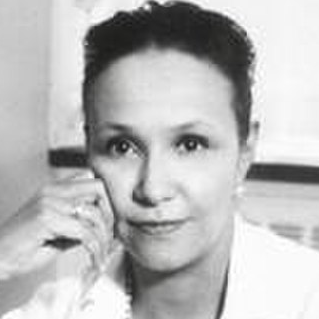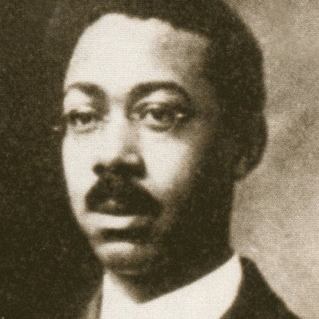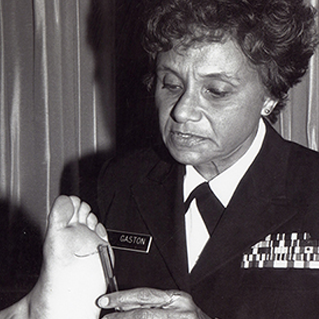Celebrating Black History Month: 6 Black Scientists Who Improved Healthcare
Published February 14, 2023

It’s no secret that Black Americans created many of the inventions we use today. From three-light traffic signals to automatic elevator doors, color PC monitors, and home security systems, many industries would not be what they are if it weren’t for these groundbreaking discoveries. Today we recognize six of the countless Black men and women who refused to be boxed in and boldly presented their ideas, theories, and innovations, forever transforming and improving the healthcare and pharmaceutical industries.

Percy L. Julian
Percy L. Julian, a research chemist, pioneered the chemical synthesis of medicinal drugs from plants. His work led to the development of treatments for glaucoma, rheumatoid arthritis, and more, as well as the production of steroids. Julian received more than 130 patents during his career and was the second black chemist to be elected to the National Academy of Sciences (NAS).

Jane Cooke Wright
Physician Jane Cooke Wright’s pivotal research in chemotherapy drugs led to remissions in patients with leukemia and lymphoma. At age 33, Wright was appointed head of the Cancer Research Foundation and went on to become the first Black female associate dean of a medical institution and the first woman president of the New York Cancer Society.

William A. Hinton, MD
Despite graduating from Harvard University, William A. Hinton, MD, faced extreme racial discrimination that halted his career in surgery. Not one to give up, he turned to the laboratory and became an expert on syphilis, inventing a new blood test for diagnosing the disease that was adopted by the U.S. Public Health Service. Hinton taught at Harvard for 30 years and was the first Black full-time professor at the institution.

Marilyn Hughes Gaston, MD
As a child, Marilyn Hughes Gaston, MD, knew she wanted to be a doctor. Although she faced prejudice while pursuing her education, she achieved her dream and transformed the medical industry when a study she published led to the development of a sickle cell disease screening program for newborns, making early treatment possible for the first time. Gaston dedicated her career to providing medical care to poor and minority families and became the first Black female director of the Bureau of Primary Health Care in the U.S. Health Resources and Services Administration.

Charles Richard Drew, MD
Surgeon Charles Richard Drew, MD is known as the “Father of the Blood Bank”. Through his research on blood transfusions, he discovered that plasma could be stored for long periods of time and reconstituted, and was consequently appointed to head the development of America’s first large-scale blood bank. His blood banking process saved thousands of lives during World War II and was adopted by the American Red Cross.

Patricia Bath, MD
Patricia Bath, MD was both the first Black female to study ophthalmology and the first to receive a medical patent. Bath invented the Laserphaco probe, which utilized laser technology to safely perform non-invasive cataract surgery and restore sight. On a mission to protect, preserve, and restore the gift of sight in underserved communities throughout the world, Bath, along with three other colleagues, founded the American Institute for the Prevention of Blindness in 1977.
Source:
- American Chemical Society National Historic Chemical Landmarks. Percy L. Julian and the Synthesis of Physostigmine. https://www.acs.org/education/whatischemistry/landmarks/julian.html
- Proceedings of the National Academy of Sciences (PNAS). (2022, July 15). Percy Lavon Julian: A man who rose to every occasion. https://www.pnas.org/doi/10.1073/pnas.2208883119#.
- Taylor, David. (2007 January/February). Percy Julian: A scientist makes inroads in chemistry and civil rights. USPTO.gov. https://www.uspto.gov/learning-and-resources/journeys-innovation/historical-stories/surmounting-insurmountable.
- Changing the Face of Medicine. (2003, October 14). Dr. Jane Cooke Wright. https://cfmedicine.nlm.nih.gov/physicians/biography_336.html/.
- New York Medical College. Jane Cooke Wright, M.D. ’45 (1919-2013). https://www.nymc.edu/school-of-medicine-som/som-alumni-profiles/alumni-in-memorium/jane-cooke-wright/.
- American College of Healthcare Executives. 8 Black Pioneers in Medicine and Healthcare You Should Know. https://www.ache.org/blog/2022/8-black-pioneers-in-medicine-and-healthcare-you-should-know.
- Ahmed, Sundus. (2021, June 5). William Augustus Hinton (1883-1959). Blackpast.org. https://www.blackpast.org/african-american-history/people-african-american-history/william-augustus-hinton-1883-1959/.
- Changing the Face of Medicine. (2003, October 14). Dr. Marilyn Hughes Gaston. https://cfmedicine.nlm.nih.gov/physicians/biography_124.html.
- Tan, Siang Yong. (2017, October). Charles Richard Drew (1904–1950): Father of blood banking. National Library of Medicine. https://www.ncbi.nlm.nih.gov/pmc/articles/PMC5651504/.
- Kossifos, Michael. (2020, October 30). Six Black Scientists and Healthcare Professionals Who Revolutionised Healthcare. Havasjust. https://www.havasjust.com/six-black-scientists-and-healthcare-professionals-who-revolutionised-healthcare/.
- American Chemical Society. Charles Richard Drew “Father of the Blood Bank”. https://www.acs.org/education/whatischemistry/african-americans-in-sciences/charles-richard-drew.html.
- Changing the Face of Medicine. (2003, October 14). Dr. Patricia E. Bath. https://cfmedicine.nlm.nih.gov/physicians/biography_26.html.


